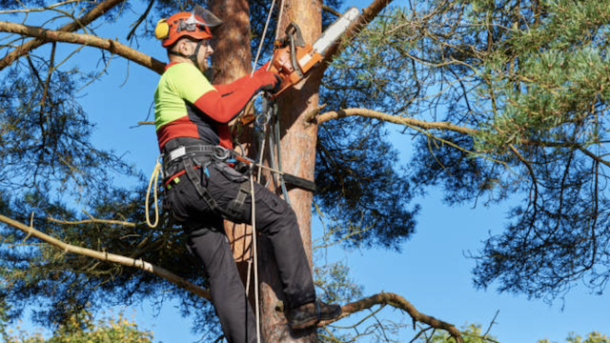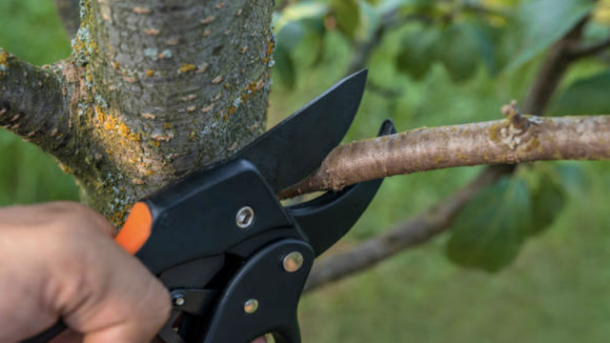Growing shade trees on your landscaping has many amazing benefits. Underneath a full-grown shade tree is the perfect location for a backyard barbeque or for kids to spend time outside. It will also keep your home cooler when temperatures rise.
To get all of the benefits of shade trees, you need to plant the right species of tree and care for them properly.
AK Tree Trimming has recommendations for the best trees to plant for shade, as well as some expert advice on caring for your shade trees so they grow strong and healthy.
Planting Trees for Shade
All trees can provide shade, but there are some types of trees that are built for optimal shade. These types of trees often have a thick, wider canopy that extends out nearly as far as it does upward.
Below, we’ve provided some examples of shade trees based on whether they would be best suited for your front or back yard.
Back Yard Shade Trees
Shade trees in the back yard are primarily for your own benefit. Next-door neighbors and passersby usually won’t be able to see these trees , so they can be planted purely for shade and enjoyment.
In addition to shade, these trees can create year-round color as well as some extra privacy from neighbors.
Here are popular options:
- Magnolia
- Sugar maple or silver maple
- Weeping willow
- Weeping cherry
- Red oak
If you have the space, a live oak is a beautiful choice. Live oaks are said to be the fastest growing shade trees, and they can get very big. A mature live oak is able to reach up to 80 feet tall and as much as 100 feet wide.
Many of these back yard shade tree suggestions get extremely large, so you definitely want to do some research to determine if the tree will have enough space to grow to its full potential.
If there is not enough space, its root system can damage your fencing or even your home. You will also have to prune the tree every year to keep it from being overgrown. A tree that grows too big for its yard will probably have to be removed, which is an inconvenient and sometimes costly situation.
Front Yard Shade Trees
In the front yard of your home, you are planting trees for your enjoyment as well, but they will be a lot more beneficial for increasing value and curb appeal to your home since they can be seen.
Buy shade trees for the front yard that are a little smaller so they don’t overshadow your home. These trees should pair with your landscaping in color and size, while still creating lots of shade for front yard play and relaxation.
These are some of the shade trees AK Tree Trimming recommends:
Red maple
River birch
Dogwood
White oak
Ginkgo tree
These trees are colorful throughout the year, and they’ll showcase even more color during the fall.
Another great choice for your front or side yard is the ‘Green Giant’ Arborvitae. This hedge-like tree can be planted in a long row with others to create privacy as well as shade.
With these suggestions in mind, we recommend that you plant what you like. In all honesty, any tree can grow to become a “shade tree.” Assuming the trees you choose are suitable for the climate in Alaska, they will provide your yard and home with shade.
Benefits of Planting Shade Trees
The benefits of having shade n your yard are numerous — there are a few that you probably don’t automatically think about.
Shade, Obviously – When temperatures {soar|get very warm, you don’t have to hide indoors if you have a comfortable, shady yard. Set up a chair or hammock below your biggest shade tree and enjoy time outside as long as you want.
Climate Control – Trees can regulate the temperature in your yard and inside your home. Not only do trees protect you from glaring sun, but they can make it feel 10-15 degrees cooler under their canopies. This means less solar radiation on your roof and siding as well, which might result in lowering your energy costs!
Better Air Quality – Trees produce oxygen and filter out pollutants, so there is cleaner air surrounding your house. Arbor Day Foundation research states that one mature tree absorbs around 48 pounds of CO2 out of the air.
Safety for Animals – If you enjoy bird watching or think squirrels and chipmunks are adorable, your trees can give them all they need to build a shelter, find food and raise babies.
Fun – What child doesn’t love a backyard tire swing or tree house? If you have small children, shade trees can provide hours of fun and joyful memories.
How to Care for Shade Trees
Caring for shade trees is very simple as long as you’ve planted the type of trees for the climate in Alaska. Trees are strong and durable after the first few years, needing little attention or care.
Consult a certified arborist from AK Tree Trimming if you have any questions about how to care for your shade trees, or even to help you select the perfect tree for your property.
After you have decided on the best shade tree(s), follow this easy care guide until your shade tree is well established.
Planting Your Shade Tree
The south, west and east of your yard get the most sun, so plant your trees on one of these sides of your yard. This is two-fold: 1) the trees will then create the most amount of shade and 2) they will also receive the maximum amount of sun for healthy growth.
Trimming Your Shade Tree
Trim during the first year or two after you first plant the tree to help to shape it and help it form a strong structure. To be safe, and for the best results, call AK Tree Trimming for tree trimming in Alaska. A certified arborist will arrive at your home and deliver professional care for the tree.
Watering Your Shade Tree
Watering a new tree is crucial. This will help them develop a deep root system and will give the tree stability in the long run.
Fertilizing Your Shade Tree
Fertilize a shade tree the same way you would any other type of tree in order to aid growth. Fertilizer is not a requirement, but it can assist in helping your tree to grow faster and blossom more leaves, which are the source of your shade.
We hope this information was helpful! Remember, when it is time to trim or prune a new shade tree, AK Tree Trimming can help! Call and a certified arborist in Alaska will visit your property, examine the tree and lay out the best care plan for its long-term health and growth.








